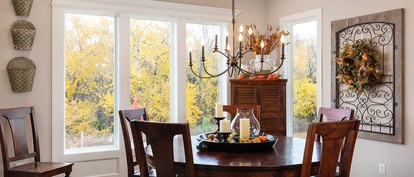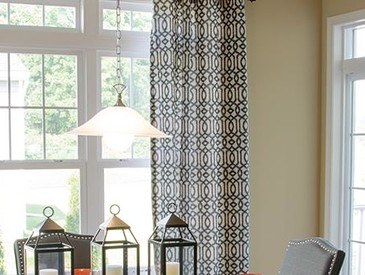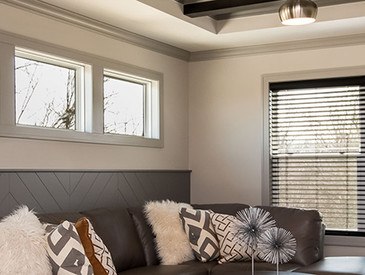Depending on your point of view, the upcoming change of seasons is either a great time of year or cause for the blues. If you like the crisp autumn air, or if you’re eager to show off that new sweater, then you’re probably happy. If you’re already lamenting the dwindling number of days in which you can lounge by the pool or cook out, then you’re most likely feeling a little bummed.
Regardless of which camp you fall in, one thing is certain: You have to get ready for those colder temperatures, and one part of that preparation is ensuring that your home is properly winterized. An important part of this endeavor is checking your windows to make certain that they’re not leaking air, because there’s no surer way to lose money than to allow warm air to escape through your windows.
There are a number of steps you can take to winterize your windows, and we’re here to cover them all: from weatherstripping to caulking and everything in between. If you’ve never prepared your windows for the cold weather, there’s no time like the present. Trust us: You’ll be pleasantly surprised at your energy savings when spring arrives.
Caulking
One surefire way to keep air from escaping is to place caulk around your windows. And not only is it efficient, but if the caulk is applied correctly, you won’t need to do it every year.
To start, grab a putty knife and scrape away any old caulk or chipped material around your window. Then take your caulking gun and apply it evenly around all four sides of your window; when you’re done, take a plastic knife, a small flat object like a caulking scraper or profiling took, or even your own finger to smooth out the caulk. For some reason, too many amateurs want to skip this last part. But smoothing out the caulk is a vital part of the job both for appearances and for performance.
It’s really that simple. Just remember to purchase caulk that works best in your climate. And if you so desire, you can caulk on the inside of your window for even greater protection against the elements.
Weatherstripping
Weatherstripping is similar to caulking, though it’s a tad more labor intensive. But that’s OK, because it’s still a fairly easy job that anyone can do.
Basically, weatherstrip is a thin layer of adhesive that looks like a roll of tape. It comes in various forms – V-channel, foam, and felt. Any one of them will suffice; you just have to decide which you prefer. To do the job properly, you’ll also need a damp rag, a measuring tape, and a penknife or a pair of scissors.
First of all, rinse the rag and clean the areas where you’ll be placing the weatherstrip. Now you need the measuring tape. Measure the length and width of your windows, and then cut the weatherstrip appropriately. It’s usually best to cut it a little longer than the correct measurement in case you come up a little short; you can always cut off the excess tape if need be.
Insulation kits
Don’t be scared by the term “kits” – this is actually a pretty simple procedure. But just like with weatherstripping, you’ll need a few tools to do the job.
Most window insulation kits come with double-sided tape and plastic. You’ll also need a tape measure, a penknife or a pair of scissors, and a hair dryer. And of course, you need to start by taking a rag or sponge and cleaning the surface where the plastic will go.
Once the window is clean, measure the area to make sure you’re cutting the plastic into the right sizes. Then it’s time to place the double-sided tape on the appropriate spots, but remember that removing the outer layer of the tape should definitely be the last thing you do before applying the plastic. Otherwise, you could inadvertently get something stuck on it and the plastic might not stick.
The plastic sheets go on next, and then it’s time for the hair dryer. In order to smooth out all the wrinkles in the plastic, direct the hair dryer at the plastic until it’s smooth.
Thermal drapes
Easily the least labor-intensive way to winterize your windows, thermal drapes are long curtains that cover your windows on the inside. And unlike weatherstripping or insulation kits, you won’t have to take them down when spring arrives: Thermal drapes work year-round, insulating your interior space and keeping it comfortable in both winter and summer.
And if you really want to cut down on your energy expenses, you can opt for blackout curtains, which are made from materials specifically designed to block sunlight. Originally created for hotels, blackout curtains have become increasingly common in private homes over the years.
But whether you choose thermal drapes or blackout curtains, the great thing about both is that they come in all kinds of shapes and designs, so you should have no trouble finding a set that meets the aesthetics of your home.































